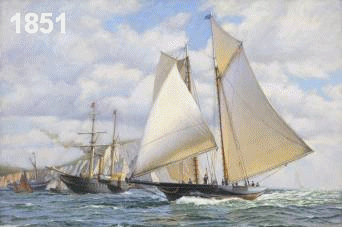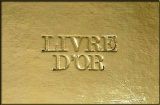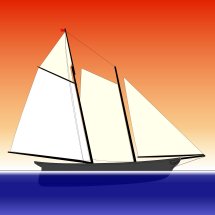 AMERICA'S CUP
AMERICA'S CUP1851-1937
"If we can fly today in the San Francisco Bay, this is because there have been "adventurers" like Walter Greene and Mike Birch.
To understand the future, we must know and respect the past."
Loïck PEYRON (Voiles et Voiliers July 2014)
![]()




 A strange couple defied the N.Y.Y.C.
A strange couple defied the N.Y.Y.C.




 Born in Wivenhoe in 1850, John Carter began sailing at a young age aboard "smacks", the typical fishing boats of Rowhedge and its neighbourhood. At the age of 22, he helmed small yachts and in 1875, he distinguished himself as the skipper of the 10-ton Lancer and later of the 110-ton cutter Moina.
Born in Wivenhoe in 1850, John Carter began sailing at a young age aboard "smacks", the typical fishing boats of Rowhedge and its neighbourhood. At the age of 22, he helmed small yachts and in 1875, he distinguished himself as the skipper of the 10-ton Lancer and later of the 110-ton cutter Moina. Thomas Fairland (1804 – October 1852) was an English lithographer, engraver and portrait painter.
Thomas Fairland (1804 – October 1852) was an English lithographer, engraver and portrait painter. Sir Oswald Walters Brierly (1817 - 14 December 1894), English marine painter, who came of an old Cheshire family, was born at Chester.
Sir Oswald Walters Brierly (1817 - 14 December 1894), English marine painter, who came of an old Cheshire family, was born at Chester. 

